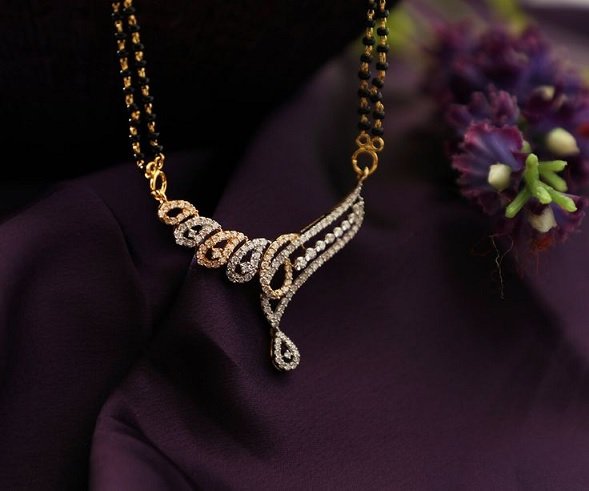It is something about the old traditions, they never go away, not loudly, just in quiet ways, not demanding anything. And after that, there is the excitement of change. Not blowing the slate clean, but what brings in fresh colour without blurring the sketch behind? And when it comes to a diamond mangalsutra, it is exactly the same case. It is no longer mere jewellery. It is a word from yesterday recreated today.
The Meaning Stays. The Form Evolves.
You don’t need to understand every ritual to feel its weight. A mangalsutra isn’t only about rules—it’s about recognition. It says, “I belong, and I choose to.”
Sure, the old ones were grand and long, chunky, not exactly office-friendly. But they weren’t meant for offices. Now? Life looks different. Workspaces blur into homes. Sarees sit beside sneakers. Jewellery, like everything else, is learning to adapt.
That’s why you’ll find diamond mangalsutra designs today that don’t tug at your collar. They sit softly on your skin. They say what they need to—and let you do the rest.
New Shapes. Same Soul.
Designers aren’t breaking the tradition. They’re bending it just enough to fit into a handbag, a morning meeting, or even a coffee run.
1. Short Chains, Strong Statements : Long chains are still loved in homes where rituals run deep. But many women now reach for shorter pieces, ones that rest neatly below the collarbone. They feel right. They look effortless. And they never get in the way.
2. Metal That Speaks Two Languages: Why settle for one tone when two can do the job better? Yellow gold still holds its place, but now it often stands next to rose or white gold. The mix gives it a neutral tone, easy to match, even with denim or pastels.
3. Pendants That Know You: The pendants don’t just sparkle. They speak. Hearts. Florals. A delicate infinity loop. Some jewellers even offer customisation with initials in diamonds or motifs that carry personal meaning. These aren’t just designs. They’re little stories hanging close to your heart.
4. On the Wrist, Not Just the Neck: For some, wearing a mangalsutra on the neck doesn’t feel natural every day. Enter the bracelet mangalsutra. It’s subtle, clean, and modern. Mostly seen in urban settings, but gradually gaining attention in select smaller towns too. A quiet nod to tradition—worn where you feel it fits best.
Keep the Symbol, Change the Setting
Even with all the change, the heart of the mangalsutra beats the same. It still says “we” in a world full of “me.” But now, you decide how it says it.
There’s no need to hide it away on busy days. Just don’t wear it to the gym. Diamonds, as pretty as they are, don’t love dumbbells. Save it for after.
What to Think About Before Buying One
You don’t have to be a jewellery expert. Just ask yourself a few honest questions.
Length: Do you want it short and close, or slightly longer and relaxed?
Metal Mix: Does yellow gold suit you? Or does rose gold match your everyday vibe better?
Design: Do you want a classic motif or something that’s yours and only yours?
Budget: Lightweight isn’t always cheaper. Diamond quality matters, so does certification and making charges. Balance both.
It’s Not Just Jewellery Anymore
A diamond mangalsutra isn’t about showing status or ticking a box. It’s personal. It’s quiet, but it stays. And it doesn’t ask to be noticed. That’s the beauty of it.
If you’re about to get married or thinking of giving your old mangalsutra a new spin, make it yours. Pick a piece that fits your pace, your chaos, your calm.
Let it evolve with you.
Own the Change. Honour the Past.
Tradition isn’t about sameness. It’s about carrying something forward, even if it changes shape. A diamond mangalsutra lets you do just that. You can wear it your way. You can honour it without being bound by it. And when you do, it becomes more than a symbol.

